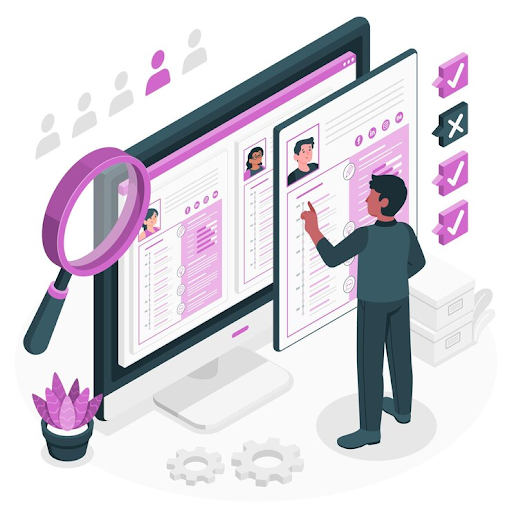In today’s competitive job market, where the demand for top talent is high and the recruitment process is fast-paced, mastering the art of optimizing job description templates for ATS compatibility is essential for every recruiter. Applicant Tracking Systems (ATS) play a crucial role in the hiring process, helping recruiters manage applications efficiently and identify the best-fit candidates. However, to leverage the full potential of ATS, it’s essential to ensure that your job description templates are tailored to align with ATS requirements.
Understanding the Role of ATS in Recruitment
ATS acts as a digital gatekeeper, scanning through resumes and job applications to identify relevant candidates based on predefined criteria. Recruiters use ATS to streamline their hiring process, manage candidate pipelines, and track applicant data efficiently. By automating repetitive tasks such as resume screening and application tracking, ATS enables recruiters to focus their time and efforts on engaging with top candidates and fostering meaningful connections.
Importance of ATS Compatibility in Job Descriptions
Incorporating ATS compatibility into your job description template is crucial for maximizing the reach of your job postings and attracting qualified candidates. ATS uses algorithms to parse through job descriptions and identify relevant keywords and phrases that match the skills and qualifications sought by employers. By optimizing your job description templates for ATS, you increase the likelihood of your job postings being surfaced to the right candidates, thus enhancing the efficiency of your recruitment efforts.
Crafting ATS-Friendly Job Description Templates
Crafting job description templates that are ATS-friendly requires a strategic approach to ensure that your postings not only attract top talent but also effectively communicate your hiring needs to the ATS Tracking System.
When crafting job description templates, it’s essential to strike a balance between creativity and clarity while ensuring compatibility with ATS. Start by clearly defining the job title, responsibilities, and qualifications required for the role. Use bullet points and concise language to highlight key requirements and qualifications, making it easier for ATS to parse through the content. Additionally, incorporate industry-specific keywords and phrases relevant to the role to improve the visibility of your job postings in search results.
Here are some key strategies to consider:
- Clear and Concise Language: When writing job descriptions, use clear and concise language to convey job responsibilities, qualifications, and expectations. Avoid jargon or industry-specific terms that may not be recognized by ATS. Instead, use simple language that aligns with the keywords and phrases commonly used by job seekers.
- Structured Formatting: Structuring your job descriptions with clearly defined sections and bullet points makes it easier for ATS to parse through the content and extract relevant information. Use standard formatting elements such as headings, subheadings, and bullet points to organize the content logically. This not only improves ATS compatibility but also enhances the readability of human readers.
- Keyword Optimization: Incorporating relevant keywords and phrases throughout your job description is essential for ATS compatibility. Conduct keyword research to identify the terms and phrases commonly used by job seekers when searching for similar roles. Integrate these keywords strategically into your job description, ensuring they appear naturally within the content.
- Use Standard Job Titles: When crafting job titles, use standard job titles that are widely recognized within your industry. Avoid using creative or unconventional job titles that may confuse ATS or job seekers. Stick to commonly used job titles that accurately reflect the role and responsibilities of the position.
- Highlight Key Qualifications: Use bullet points or bold text to highlight key qualifications and requirements for the role. This makes it easier for both ATS and job seekers to quickly identify the most important criteria for the position. Be specific about the skills, experience, and qualifications required, and avoid vague or generic language.
- Include Location and Remote Work Options: Specify the location of the job and indicate whether remote work options are available. Including location information is important for ATS to accurately match candidates based on their proximity to the job location. Additionally, mentioning remote work options can attract a wider pool of candidates who may be interested in remote opportunities.
- Avoid Formatting Elements: While it may be tempting to use formatting elements such as tables, images, or graphics to enhance the visual appeal of your job descriptions, these elements can interfere with ATS parsing. Stick to plain text format and avoid using non-standard formatting elements that may not be compatible with ATS.
- Proofread and Test: Before finalizing your job description templates, thoroughly proofread the content for spelling and grammatical errors. Additionally, test your job descriptions across different ATS platforms to ensure compatibility and readability. Submit test applications using your job descriptions and analyze the results to identify any formatting or parsing issues that need to be addressed.
By following these strategies, you can craft ATS-friendly job description templates that effectively communicate your hiring needs to both ATS and job seekers, ultimately helping you attract qualified candidates and streamline your recruitment process.
Leveraging Keywords for ATS Parsing
Keywords play a pivotal role in ATS parsing, helping recruiters effectively communicate the requirements and qualifications sought for a particular role. Conduct keyword research using tools like Ahrefs to identify relevant keywords and phrases commonly used by job seekers in your industry. Integrate these keywords strategically throughout your job description templates, ensuring they appear naturally within the content. However, avoid keyword stuffing, as this can negatively impact readability and ATS performance.
Formatting and Structuring Job Descriptions for ATS Success
The format and structure of your job descriptions also play a significant role in ATS compatibility. Use standard fonts and formatting styles to ensure readability across different ATS platforms. Break down the content into clearly defined sections, such as job responsibilities, qualifications, and application instructions, using subheadings to improve navigation and organization. Avoid using images, graphics, or non-standard formatting elements that may hinder ATS parsing.
Testing and Refining Job Description Templates for ATS Compatibility
Once you’ve crafted your job description templates, it’s crucial to test them across different ATS platforms to ensure compatibility and effectiveness. Submit test applications using your job description templates and analyze the results to identify any formatting or parsing issues. Iterate your templates based on feedback and performance metrics, continually refining them to enhance ATS compatibility and optimize candidate engagement.
Conclusion
Mastering ATS compatibility in job description templates is essential for recruiters looking to streamline their hiring process and attract top talent effectively. By understanding the role of ATS, crafting ATS-friendly job descriptions, leveraging keywords strategically, and testing and refining your templates, you can unlock hiring success and elevate your recruitment efforts to new heights. Embrace the power of ATS compatibility and watch your candidate pipeline flourish with qualified talent ready to make an impact.


Leave a comment